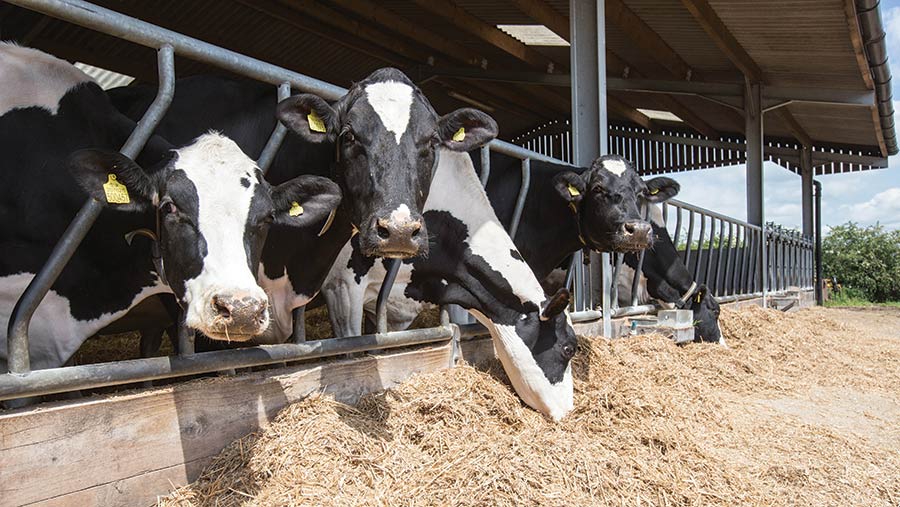Study shows how calcium can affect dry cow fertility
 © Tim Scrivener
© Tim Scrivener Increasing calcium in pre-calving diets can improve postpartum uterine health and fertility, a recent study has revealed.
The study, which took place at the University of Illinois, examined feeding dry cows differing amounts of calcium or no calcium.
See also: How to feed dry cows to prevent negative protein balance
How the study worked
A group of 76 Holsteins was split into three and fed:
- A negative dietary cation-anion difference (DCAD) diet with calcium added at 2% of dry matter (DM)
- A negative DCAD diet with no added calcium (0.4% of DM)
- And a positive DCAD control with a standard calcium range (0.4% of DM).
The cows were fed these diets 28 days before calving until 30 days after calving, when the animals moved on to a common diet until pregnancy checks at 72 days in milk.
Cow health and fertility checks were carried out after calving. These included taking ultrasound measurements four days post-calving to identify follicular growth to determine days to first ovulation.
Blood tests were carried out, along with metricheck scores to evaluate vaginal discharge for the presence of purulent material – indicating uterine disease. Uterine swabs were also taken to identify infection.
What the results showed
- Cows on the negative DCAD diets with higher inclusion of calcium (2%) had improved reproductive performance.
- Cows fed the high-calcium diet took 16.3 days to ovulate after calving, while the low-calcium cows took 17.93 days against the control at 18.93 days.
- Cows fed the high-calcium diet were found to have disease-fighting antioxidants, blood tests revealed.
- They also had an increased number of glands in the uterine lining. These keep the uterus clean and excrete hormones which start ovulation, improving reproductive performance.
- Cows fed the added calcium also had a lower metricheck score and a healthier uterine environment.
Professor Phil Cardoso, from the university’s department of animal sciences, says other studies show shorter ovulation leads to improved conception rates.
Cows on the higher calcium diet probably had a healthier uterine environment due to enhanced immune response to parturition and an alleviation of oxidative stress.
He recommends farmers use a negative DCAD strategy with a higher concentration of calcium in the diet (1.5-2% of DM).
This is because cows that were fed negative DCAD diets suffered from increased calcium excretion and, therefore, performed very poorly without extra calcium.
In the study, calcium carbonate – otherwise known as limestone – was used.
“But if there are better sources available, I encourage farmers to discuss them with their nutritionists and veterinarians as they may need to be used in a smaller amount,” said Prof Cardoso.
Take-away messages
- Consult with a nutritionist or veterinary specialist before adding calcium to the diet
- Know the correct concentration of calcium – ideally 1.5-2.0% of DM
- Too much calcium could lead to milk fever
